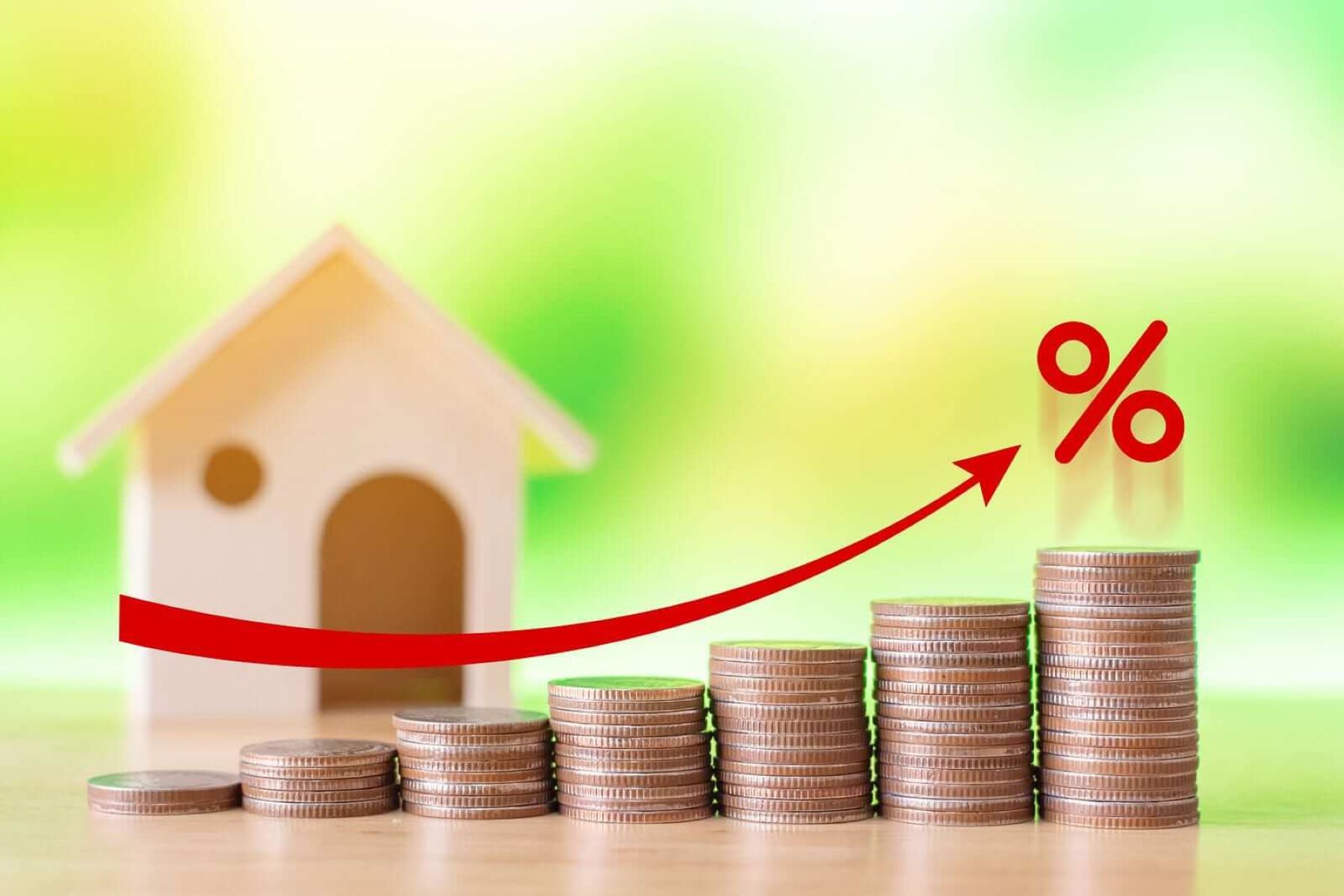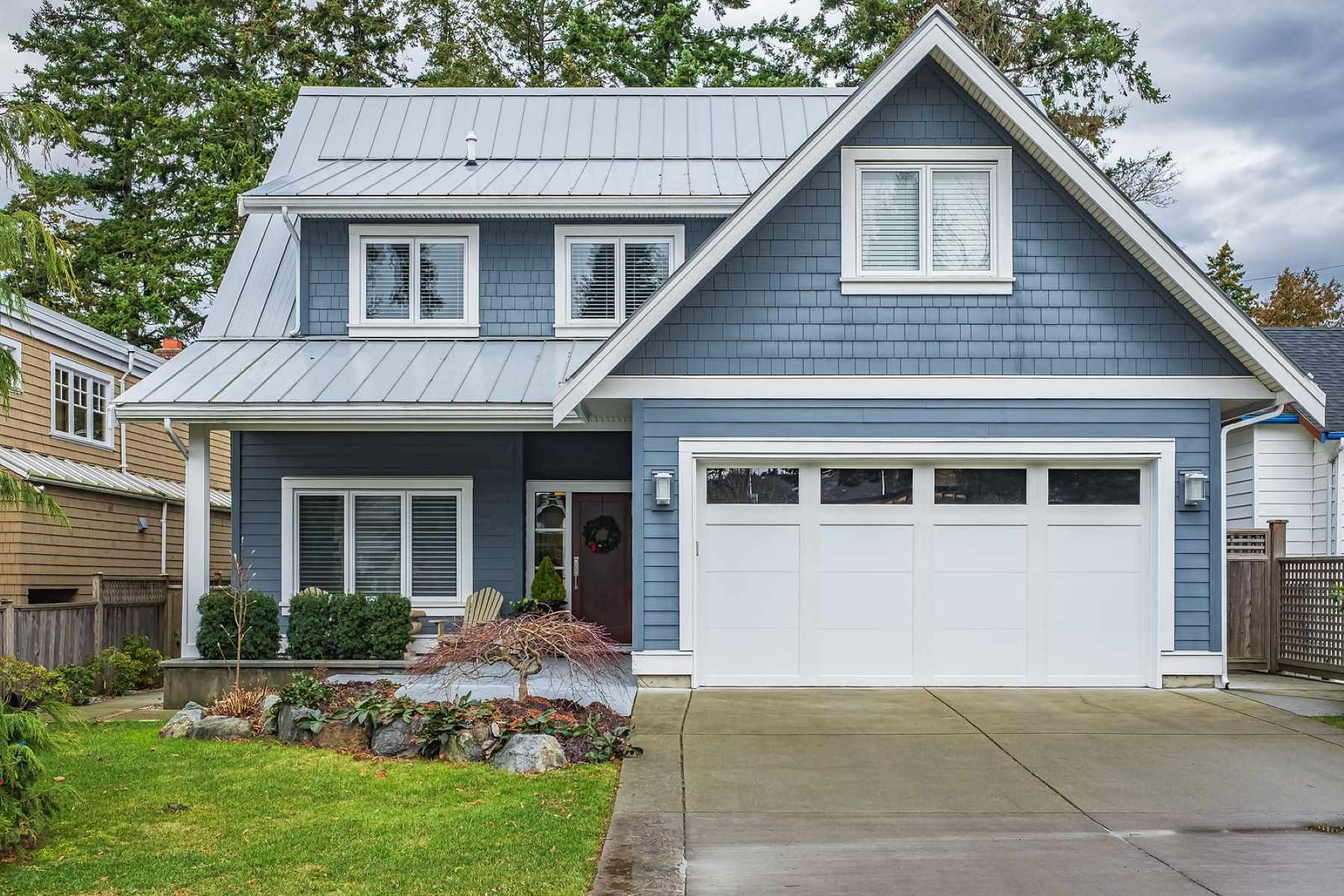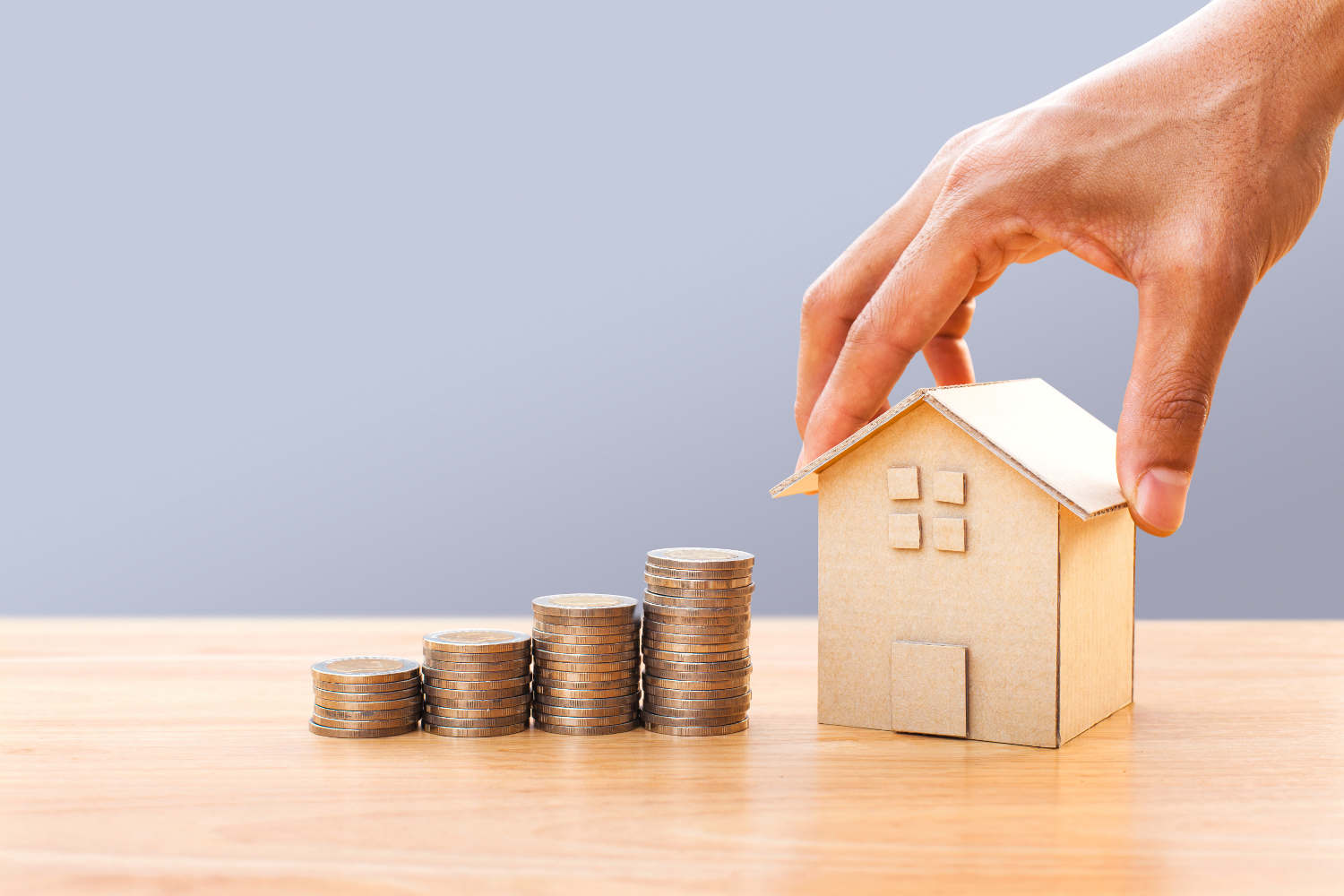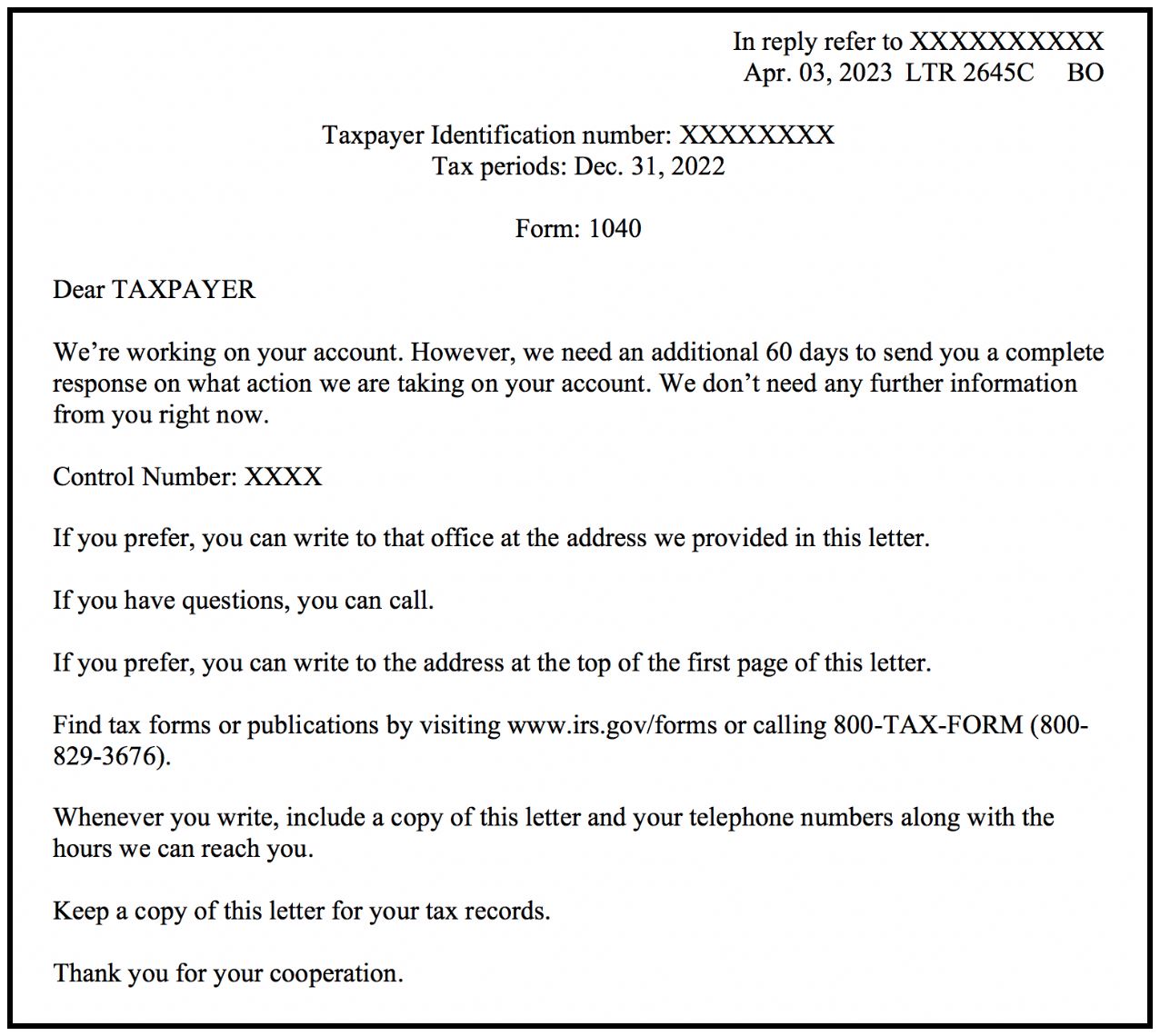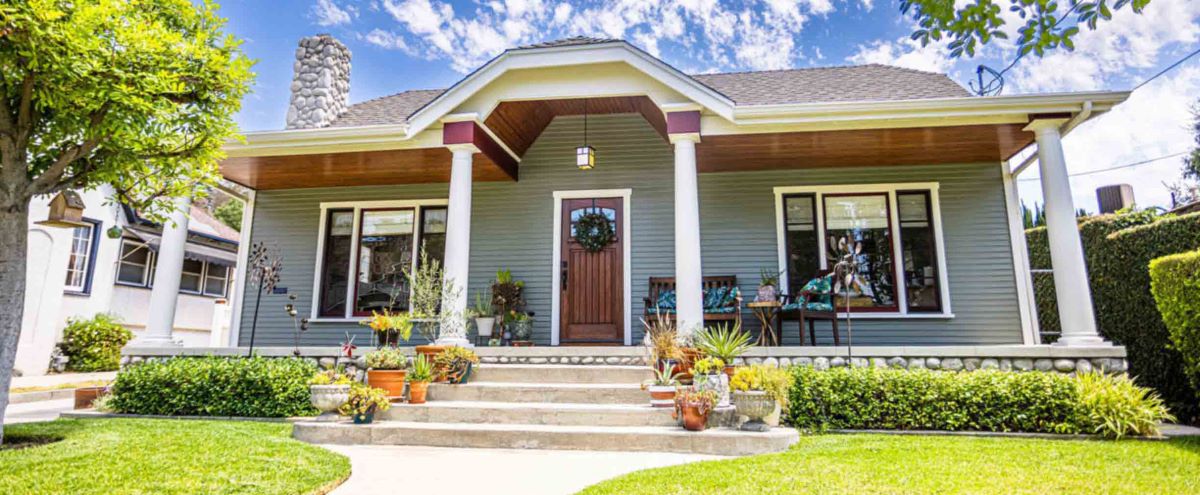Home>Finance>How To Convert A Primary Residence To An Investment Property


Finance
How To Convert A Primary Residence To An Investment Property
Published: October 18, 2023
Looking to convert your primary residence into an investment property? Learn how to navigate the financial aspects with our comprehensive guide on finance.
(Many of the links in this article redirect to a specific reviewed product. Your purchase of these products through affiliate links helps to generate commission for LiveWell, at no extra cost. Learn more)
Table of Contents
- Introduction
- Understanding the concept of converting a primary residence to an investment property
- Evaluating the financial feasibility of converting your primary residence
- Legal considerations and implications
- Insurance considerations when converting your primary residence to an investment property
- Tax implications and strategies for converting a primary residence to an investment property
- Renovations and upgrades to increase the market value of your investment property
- Finding reliable tenants and managing your investment property
- Conclusion
Introduction
Converting a primary residence to an investment property is a financial move that many homeowners consider at some point in their lives. Whether it’s to generate passive income, take advantage of a booming real estate market, or simply diversify their investment portfolio, the decision to convert a primary residence into an investment property can have significant financial implications.
But what exactly does it mean to convert a primary residence into an investment property? In simple terms, it involves transitioning a home that you currently live in as your primary residence into a property that you will rent out to tenants for the purpose of generating rental income. This can be an attractive option for homeowners who find themselves in a position where they no longer need to occupy the property or are looking for a way to generate additional income.
However, before diving into this endeavor, it is crucial to understand the complexities and considerations involved in converting a primary residence into an investment property. From evaluating the financial feasibility to understanding the legal and tax implications, this article will provide you with valuable insights and guidance to help you navigate this process successfully.
It is important to note that converting your primary residence into an investment property is a significant decision that should not be taken lightly. It requires careful planning, research, and thoughtful consideration of various factors. It is recommended to consult with financial advisors, tax professionals, and real estate agents to ensure that you make informed decisions and maximize the benefits of this conversion.
In the following sections, we will explore the crucial aspects of converting a primary residence into an investment property, including evaluating financial feasibility, legal considerations, insurance implications, tax strategies, property renovations, tenant management, and more. By the end of this article, you will be equipped with the knowledge and tools to make an informed decision and embark on a successful journey into real estate investment.
Understanding the concept of converting a primary residence to an investment property
Converting a primary residence to an investment property involves a transition from using the property as your primary home to using it as a rental property for income generation. It essentially means shifting the purpose of the property from providing shelter and personal use to serving as a source of rental income and potential capital appreciation.
There are different reasons why homeowners choose to convert their primary residence into an investment property. Some may decide to downsize or relocate for personal reasons, such as a job change or retirement, and find it more financially beneficial to rent out their current home instead of selling it. Others see an opportunity to tap into the real estate market and take advantage of potential rental income and property value appreciation.
One of the key advantages of converting a primary residence into an investment property is the potential to generate passive income. By renting out the property, homeowners can earn a steady stream of rental income, which can help cover mortgage payments, property maintenance costs, and even provide an additional source of income.
Moreover, converting a primary residence into an investment property offers potential tax advantages. Homeowners may be able to deduct expenses related to the rental property, such as property maintenance, repairs, insurance, and property management fees. Additionally, they may also benefit from depreciation deductions, which can help offset their rental income for tax purposes.
Another benefit of converting a primary residence to an investment property is the potential for capital appreciation. Real estate has historically shown to be a valuable asset class, with properties often gaining value over time. By holding onto the property and renting it out, homeowners can potentially benefit from an increase in property value, allowing them to sell the property at a higher price in the future.
However, it is important to note that converting a primary residence into an investment property also comes with potential risks and challenges. Landlord responsibilities, finding and managing tenants, dealing with property maintenance, and complying with legal and regulatory requirements are some of the challenges that homeowners may face when renting out their property.
Overall, understanding the concept of converting a primary residence to an investment property is essential before embarking on this financial endeavor. It requires careful consideration of personal circumstances, financial goals, and the local real estate market. By weighing the advantages and challenges, homeowners can make informed decisions and set themselves up for success in the world of real estate investment.
Evaluating the financial feasibility of converting your primary residence
Before making the decision to convert your primary residence into an investment property, it is crucial to evaluate the financial feasibility of this undertaking. This involves a thorough assessment of various factors to ensure that it aligns with your financial goals and will ultimately be a profitable venture.
The first step in evaluating the financial feasibility is to assess the rental market in your area. Research the demand for rental properties, vacancy rates, and average rental prices. This will give you an idea of the potential rental income you can expect and whether it will be sufficient to cover your mortgage payments, property taxes, insurance, and other associated costs.
You should also consider the expenses associated with converting your primary residence into an investment property. This includes any necessary renovations or repairs to make the property appealing and suitable for tenants. It’s important to factor in these upfront costs when determining the financial feasibility.
Another vital aspect is analyzing your current mortgage situation. If you still have a mortgage on the property, you will need to determine if your current mortgage allows for the conversion to a rental property or if you need to refinance. Speak with your mortgage lender or a financial advisor to understand the implications and costs associated with refinancing.
In addition to the mortgage, consider other ongoing expenses such as property taxes, insurance, and maintenance costs. These expenses can significantly impact the overall financial viability of converting your primary residence. It’s important to understand these costs and factor them into your financial calculations.
One key aspect to evaluate is the potential return on investment (ROI) of converting your primary residence into an investment property. Calculate the expected rental income and subtract all related expenses to determine your net operating income (NOI). Then, calculate the ROI by dividing the NOI by the total investment cost, including any renovation expenses or refinancing costs. A positive ROI indicates that the investment has the potential to generate a profit.
Additionally, it’s crucial to consider the long-term financial implications and risks associated with converting a primary residence into an investment property. Consider factors such as the potential for rental market fluctuations, vacancy rates, and the impact on your personal financial situation if you are unable to find reliable tenants or experience unexpected maintenance costs.
Lastly, seek advice from professionals such as financial advisors or real estate agents who can provide insights into the local market and help you assess the financial feasibility of this conversion. They can assist with calculations, offer guidance on rental prices, and provide valuable advice based on their expertise and experience.
Evaluating the financial feasibility of converting your primary residence is a crucial step in determining whether this decision is a sound investment strategy. By thoroughly assessing the rental market, considering expenses, calculating potential ROI, and seeking professional advice, you can make an informed decision that aligns with your financial goals and maximizes your chances of success in the world of real estate investment.
Legal considerations and implications
When converting your primary residence to an investment property, there are several legal considerations and implications that you need to be aware of to ensure compliance with local regulations and protect yourself legally. Understanding these legal aspects is crucial to mitigate potential risks and avoid legal troubles in the future.
The first step is to review local laws and regulations regarding rental properties. Familiarize yourself with zoning restrictions, rental property requirements, and any necessary permits or licenses that may be required in your area. Certain neighborhoods or homeowner associations may have specific rules and restrictions regarding rental properties, so it’s essential to understand and adhere to those guidelines.
It’s also crucial to review your existing mortgage agreement. Some mortgages have specific clauses that prohibit homeowners from converting their primary residence into a rental property without obtaining permission or refinancing to an investment property loan. Violating these clauses could have legal consequences, including potential foreclosure. Consult with your mortgage lender or a legal professional to understand the terms of your mortgage agreement and the steps you need to take to comply with it.
Another legal consideration is landlord-tenant laws. These laws vary from jurisdiction to jurisdiction and provide guidelines on areas such as tenant screening, lease agreements, security deposits, eviction processes, and property maintenance responsibilities. Understanding and complying with these laws will help protect both you and your tenants and ensure a smooth and legal rental process. Consider consulting with a real estate attorney or researching the specific landlord-tenant laws in your area to ensure full compliance.
Furthermore, it’s crucial to have a legally binding lease agreement in place when renting out your converted investment property. The lease agreement should outline the rights and responsibilities of both parties, including rent payment terms, security deposit requirements, rules for property use, maintenance responsibilities, and procedures for conflict resolution. It’s advisable to work with a legal professional to draft a comprehensive lease agreement that protects your interests as a landlord.
Rental property insurance is another aspect to consider. Your existing homeowner’s insurance policy may not provide adequate coverage for a rental property. Contact your insurance provider to discuss options for landlord insurance or a rental dwelling policy that specifically covers the unique risks associated with renting out a property. This will ensure that you are protected in the event of property damage, liability claims, or other unforeseen circumstances.
Lastly, it’s essential to keep detailed financial records and documentation related to your rental property. This includes rental income, expenses, repairs and maintenance, and any communication with tenants. These records will not only help you track your financials but also serve as evidence in case of any disputes or legal issues that may arise in the future.
Converting your primary residence into an investment property involves legal implications that should not be taken lightly. By familiarizing yourself with local regulations, complying with mortgage agreements, understanding landlord-tenant laws, having proper lease agreements and insurance coverage, and maintaining detailed records, you can navigate the legal aspects of renting out your property and protect yourself legally.
Insurance considerations when converting your primary residence to an investment property
When converting your primary residence into an investment property, it’s crucial to consider the insurance implications to adequately protect your property and mitigate potential risks. Insurance coverage for an investment property differs from a standard homeowner’s policy, and it’s essential to ensure that you have the appropriate coverage in place.
The first step is to contact your insurance provider and inform them of your intention to convert your primary residence into a rental property. Most homeowner’s insurance policies do not cover rental activities, and operating a property as an investment without the proper coverage can leave you exposed to significant financial risks.
Your insurance provider will be able to guide you on the necessary changes and adjustments needed to your policy. They may offer options such as landlord insurance or a rental dwelling policy specifically designed to cover the unique risks associated with renting out a property.
Landlord insurance typically provides coverage for the physical structure of the property, liability protection in case of tenant injuries, loss of rental income, and legal expenses related to tenant disputes or eviction proceedings. It can also include coverage for property damage caused by tenants or vandalism.
When discussing insurance options, make sure to inquire about liability coverage. As a landlord, you are responsible for ensuring a safe living environment for your tenants. Liability coverage protects you in case of accidents or injuries that may occur on the property. This coverage is crucial in mitigating financial risks and potential legal liabilities.
It’s important to note that insurance premiums for rental properties are typically higher than those for owner-occupied homes. This is because rental properties carry higher risks due to the presence of tenants and the potential for greater property damage or liability claims. However, the cost of insurance is a necessary expense to protect your investment and provide peace of mind.
When evaluating insurance options, consider the coverage limits and deductibles offered by different providers. It’s essential to ensure that the coverage adequately protects the value of your investment property and aligns with your risk tolerance.
In addition to obtaining the appropriate insurance coverage, maintaining good documentation is crucial. Keep detailed records of any incidents, repairs, upgrades, or communication with tenants. This documentation will be valuable in case of any insurance claims or disputes.
Regularly review your insurance coverage to ensure that it remains adequate and up-to-date. As the rental market evolves and property values change, it’s important to re-evaluate your coverage and make any necessary adjustments to ensure that you are adequately protected.
Converting your primary residence into an investment property requires careful consideration of insurance coverage. By consulting with your insurance provider, obtaining the appropriate landlord insurance, understanding the coverage and liability protection, and maintaining accurate documentation, you can protect your investment property and mitigate potential risks.
Tax implications and strategies for converting a primary residence to an investment property
Converting a primary residence into an investment property has significant tax implications that homeowners must be aware of. It’s important to understand these implications and explore strategies to optimize your tax situation when transitioning from a primary residence to a rental property.
One key tax consideration is the potential loss of certain tax benefits associated with a primary residence. For example, homeowners may no longer be eligible for the mortgage interest deduction on their tax returns if they convert their primary residence into an investment property. This deduction allows homeowners to deduct the interest paid on their mortgage, reducing their taxable income. Therefore, it’s crucial to assess how the loss of this deduction may affect your overall tax liability.
However, converting your primary residence into an investment property also opens up new tax advantages. You may be able to deduct expenses related to the rental property, such as property maintenance, repairs, insurance premiums, property management fees, and even depreciation of the property. These deductions can help offset the rental income, reducing your overall taxable rental income.
It’s important to keep accurate records of all expenses related to the investment property. This includes receipts for repairs, maintenance costs, property management fees, and other related expenses. These records will be crucial in substantiating your deductions and minimizing your taxable rental income.
Depreciation is another essential tax strategy for rental properties. Depreciation allows you to deduct a portion of the property’s value over time, considering wear and tear. By claiming depreciation, you can further offset your rental income and reduce your tax liability. However, it’s essential to consult with a tax professional to ensure compliance with tax laws and accurately calculate depreciation deductions.
Another strategy for optimizing the tax implications of converting a primary residence into an investment property is a 1031 exchange. A 1031 exchange allows you to defer capital gains taxes on the sale of your primary residence if you use the proceeds to purchase another like-kind investment property. This strategy can provide significant tax advantages and allow you to continue growing your real estate investment portfolio while deferring taxes. However, specific rules and timeframes must be followed when executing a 1031 exchange, so it’s advisable to work with a qualified intermediary and consult with a tax professional.
If you decide to sell your investment property in the future, capital gains tax will be applicable. Understanding the rules and regulations surrounding capital gains tax is crucial to minimize your tax liability. Factors such as the length of time you held the property and whether it was used as your primary residence at any point can impact the tax rate and potential exemptions available to you.
Lastly, consulting with a tax professional who specializes in real estate investment can provide invaluable guidance on tax-saving strategies and help you navigate the complex tax implications of converting your primary residence into an investment property. They can ensure that you are taking advantage of all available deductions and exemptions while staying compliant with tax laws.
Converting a primary residence into an investment property comes with both tax advantages and considerations. By understanding the implications, keeping accurate records, exploring deduction opportunities, considering strategies like depreciation and 1031 exchanges, and consulting with tax professionals, homeowners can optimize their tax situation and maximize their investment returns.
Renovations and upgrades to increase the market value of your investment property
When converting your primary residence into an investment property, making strategic renovations and upgrades can help increase its market value and attract potential tenants. By investing in improvements that enhance both the aesthetics and functionality of the property, you can maximize its rental income potential and potentially achieve a higher return on investment.
The first step in planning renovations is to evaluate the current condition of your property. Identify areas that require attention or improvements, such as outdated fixtures, worn flooring, or outdated appliances. Prioritize renovations that will have the most impact on the property’s value and appeal.
Kitchens and bathrooms are often major selling points for rental properties. Consider upgrading these areas with modern fixtures, countertops, and appliances. The investment in these high-traffic areas can significantly increase the property’s appeal to potential tenants and justify higher rental rates.
Improving the overall energy efficiency of the property can also be a worthwhile investment. Upgrading insulation, installing energy-efficient windows, and replacing outdated heating and cooling systems can reduce utility costs for both you and your tenants. This can make your property more attractive, as tenants are increasingly conscious of energy usage and its impact on their monthly expenses.
Enhancing the curb appeal of the property is equally important. First impressions matter, and a well-maintained and visually appealing exterior can help attract quality tenants. Consider refreshing the landscaping, repairing or repainting the exterior, and upgrading the entryway for a welcoming appearance.
Another area to consider is optimizing the property’s layout and functionality. Open floor plans and flexible living spaces are popular among renters. If feasible, consider removing walls or reconfiguring spaces to create a more modern and versatile living environment. This can make the property more appealing and increase its market value.
Installing updated technology and amenities can also make your property stand out in the rental market. Consider incorporating smart home features, such as keyless entry systems, programmable thermostats, or security systems. These modern amenities can attract tech-savvy tenants and justify higher rental rates.
While renovations and upgrades can increase the market value of your investment property, it’s essential to strike a balance. Consider the rental market in your area and the potential return on investment for each renovation. Some improvements may have a higher ROI than others, and it’s crucial to prioritize projects that will provide the most value for your investment.
Additionally, ensure that any renovations and upgrades comply with local regulations and obtain any necessary permits. Failure to comply with building codes and regulations can result in legal trouble and financial penalties.
Before embarking on any renovations, it’s advisable to consult with a real estate agent or property management professional familiar with the local rental market. They can provide insights into the specific features and amenities that appeal to tenants and help you make informed decisions about where to invest your renovation budget.
By strategically investing in renovations and upgrades, you can increase the market value of your investment property and attract quality tenants. Assess the condition of the property, prioritize improvements, consider energy efficiency upgrades, enhance curb appeal, optimize layout and functionality, incorporate modern technology and amenities, and seek professional guidance. These efforts can help maximize your rental income and ultimately lead to a successful real estate investment.
Finding reliable tenants and managing your investment property
One of the key aspects of successfully converting your primary residence into an investment property is finding reliable tenants and effectively managing the rental property. By employing effective strategies for tenant screening and implementing a sound management plan, you can ensure a smooth and profitable rental experience.
The first step is to establish criteria for tenant screening. Determine the qualities and qualifications you are looking for in prospective tenants, such as stable employment, good credit history, and positive rental references. Advertise the property through various channels, including online listing platforms and local rental websites, to attract potential tenants.
Screening prospective tenants is crucial in finding reliable tenants. Conduct thorough background checks, including credit checks, rental history verifications, and even employment verifications. This will help ensure that you select tenants who are financially stable, responsible, and likely to uphold the terms of the lease agreement.
Once you have identified potential tenants, consider conducting interviews or meetings to assess their compatibility with your property and gauge their understanding and commitment to the responsibilities of being a tenant.
When it comes to managing your investment property, effective communication is key. Establish clear lines of communication with your tenants and be responsive to their concerns or maintenance requests. Promptly address any issues that arise and keep open channels of communication to foster a positive tenant-landlord relationship.
Maintaining the property is another essential aspect of successful property management. Regularly inspect the property to identify any necessary repairs or maintenance needs. Promptly address any maintenance issues to ensure that the property remains in good condition and to minimize potential tenant dissatisfaction.
Consider outsourcing property management tasks to a professional property management company if you prefer to have a hands-off approach or if managing the property becomes overwhelming. A property management company can handle tenant screening, rent collection, property maintenance, and other administrative tasks on your behalf, freeing up your time and ensuring that your investment property is well-managed.
It’s also important to stay updated with relevant landlord-tenant laws and regulations. Familiarize yourself with local rental laws, eviction processes, and rent increase regulations to ensure that you are in compliance with legal requirements. Consider consulting with a real estate attorney or joining landlord associations to stay informed and receive professional guidance.
Lastly, always document and keep records of all interactions, agreements, and transactions with tenants. This includes signed lease agreements, maintenance requests, rent receipts, and any communication related to the rental property. Proper documentation will serve as evidence in case of disputes or legal issues that may arise.
By following these strategies for finding reliable tenants and effectively managing your investment property, you can create a positive rental experience for both yourself and your tenants. Carefully screen potential tenants, establish clear communication, maintain the property, consider outsourcing property management tasks if needed, stay informed about landlord-tenant laws, and maintain thorough documentation. With proper management, your investment property can be a valuable source of passive income and long-term financial growth.
Conclusion
Converting a primary residence into an investment property can be a lucrative financial move, providing the opportunity to generate rental income and potentially increase your overall wealth. However, it is a decision that should not be taken lightly and requires careful consideration of various factors.
Throughout this article, we have explored the key aspects and considerations involved in converting a primary residence into an investment property. From understanding the concept and evaluating the financial feasibility to addressing legal implications, insurance considerations, tax strategies, property renovations, tenant management, and more, we have covered the essential elements to help you make informed decisions.
It is important to thoroughly evaluate the financial feasibility of converting your primary residence. Assess the rental market, calculate potential expenses, and consider the impact on your mortgage. Understanding the legal and insurance implications is crucial to ensure compliance and protect yourself and your investment.
Formulating tax strategies is another essential aspect to optimize your tax situation. Consider deductions, depreciation, 1031 exchanges, and consult with tax professionals to maximize your tax benefits.
Renovations and upgrades can significantly increase the market value of your investment property. Prioritize renovations that have the most impact and align with tenant preferences, such as kitchen and bathroom upgrades, energy efficiency improvements, and curb appeal enhancements.
Finding reliable tenants and effectively managing your investment property are keys to success. Implement thorough tenant screening processes, maintain clear communication, and stay on top of property maintenance and legal obligations. Consider outsourcing property management tasks if necessary.
In conclusion, converting a primary residence into an investment property offers an opportunity to generate passive income and potentially grow your wealth. However, it requires careful evaluation, planning, and execution. By understanding the concepts, considering financial feasibility, complying with legal and insurance requirements, optimizing tax strategies, undertaking renovations strategically, and implementing effective tenant management, you can navigate the process successfully and maximize the benefits of your investment property.
Remember, it is advisable to consult with professionals in the real estate, finance, and legal fields to ensure that you make informed decisions based on your individual circumstances. With careful consideration and proper management, converting your primary residence into an investment property can be a rewarding and financially fulfilling endeavor.
